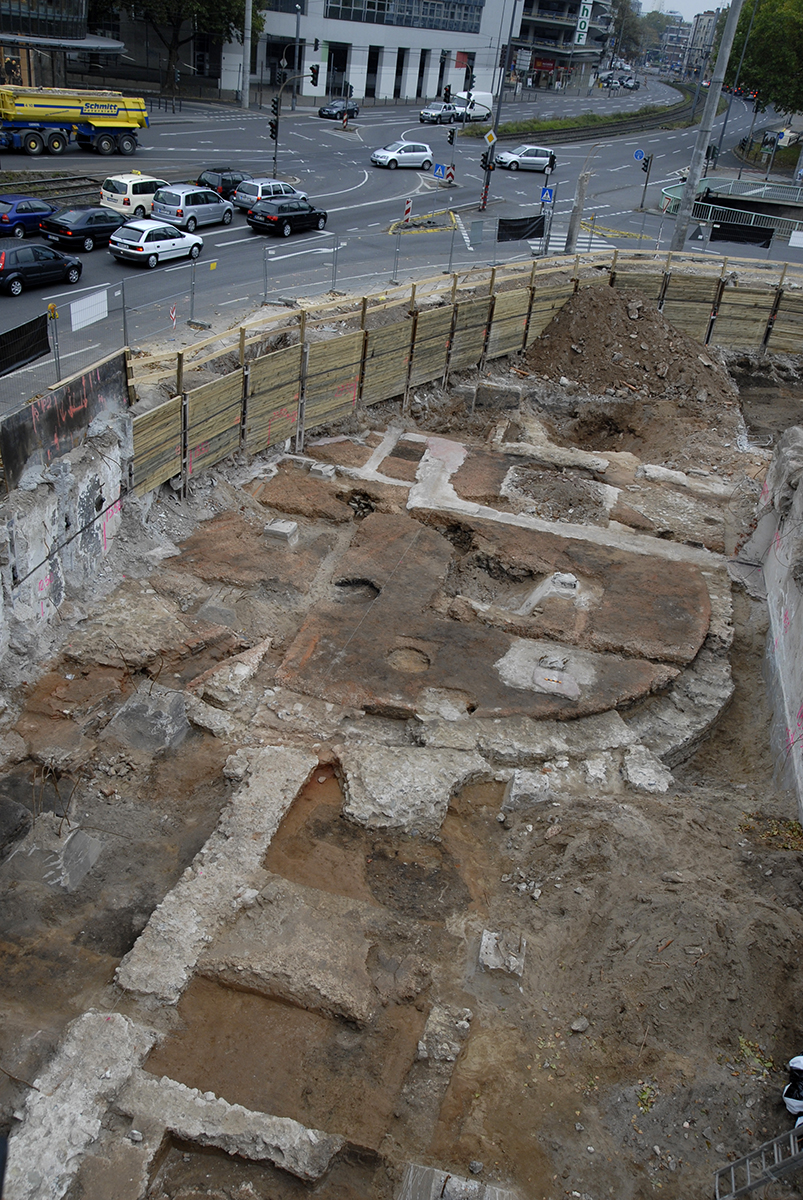The Great Baths of Colonia Claudia Ara Agrippinensium (Cologne) – A large public building in the Roman provincial capital
The Great Baths of the CCAA play an important role both in the settlement dynamics of the Roman city and in the development of large Roman bathing facilities in the northwestern provinces. When they were first discovered in 1950 by Otto Doppelfeld (RGM), their construction was seen in connection with the city's elevation to a colonia in 50 AD. Excavations in 2007/08 under Alfred Schäfer (RGM) then showed that these baths were rebuilt and enlarged just one generation later. This reconstruction may be related to the city's establishment as the seat of the governor for the province of Germania Inferior. Like no other major building of the CCAA, the Great Baths are directly linked to the city's water supply via aqueduct lines, which had to be expanded specifically for the operation of the baths, and to the sewage system. This connection - i.e. the questions of the construction and the purpose of the water pipe and its extensions - is to be clarified by examining the Eifel water pipe using scientific methods. Further scientific research is being carried out into the furnishing of the baths with marble incrustations.
The early construction and the early reconstruction of the Great Baths are astonishing when compared to other large baths in cities in the northwestern provinces or the heartland of the Roman Empire. At about the same time, we see an architectural and technological change in Pompeii, which can also be evidently seen in the Great Baths in Cologne.
Their position within the development of medium-sized baths in the Roman northwestern provinces can be based on a large comparative basis, which has increased considerably since the standard work by Daniel Krencker and others on the Imperial Baths in Trier (1929), but has never been analyzed in more detail.
Responsible: Dr. Michael Dodt
Scientific collaboration: Kevin Otten M.A.
Funding: German Research Foundation (2020-2022)
Cooperation partners: Roman-Germanic Museum of the City of Cologne (Prof. Dr. M. Trier), Geoscience Center of the University of Göttingen (Dr. Andreas Kronz), Institute of Geography and Geology - Geomaterials Research at the University of Würzburg (Dr. Vilma Ruppiene)
